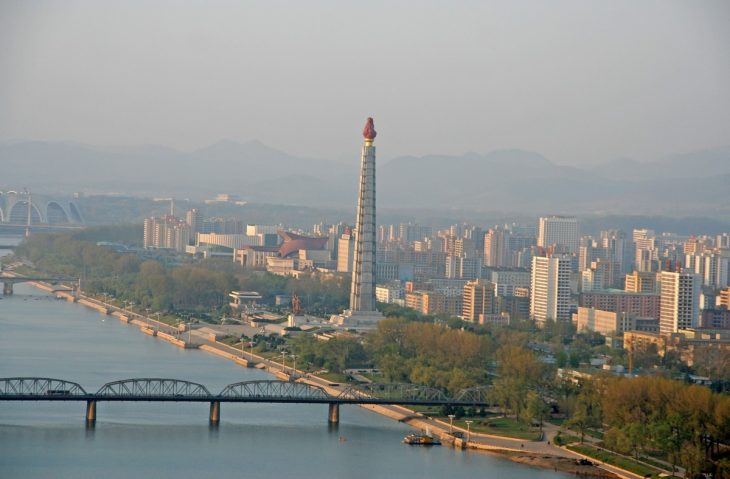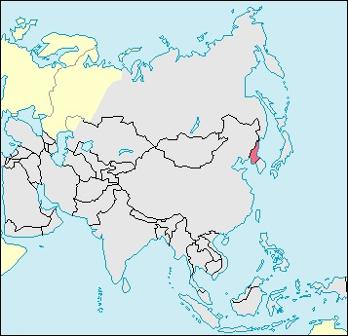What is the Capital of North Korea? Pyongyang

Capital City of North Korea: Pyongyang
City Overview
Pyongyang, the capital and largest city of North Korea (officially the Democratic People’s Republic of Korea, or DPRK), is situated on the Taedong River in the western part of the country. With a history dating back over 2,000 years, it is one of the oldest cities in East Asia. The city has been the capital of Korea for much of its history, but it has especially come to symbolize the political, ideological, and cultural heart of North Korea since the formation of the DPRK in 1948.
Pyongyang’s history as a capital dates back to ancient times. During the Goryeo Dynasty (918–1392), Pyongyang was an important city, though it was eclipsed by Kaesong as the capital. However, following the end of the Korean War in the 1950s, Pyongyang was revitalized and rebuilt by the Soviet Union and became the showcase city of the North Korean regime, epitomizing its socialist and nationalistic ideals.
Today, Pyongyang is a highly controlled city, with its architecture, monuments, and public spaces designed to reflect the authority of the ruling regime. It is a city where modernism, socialist realism, and the legacy of the Kim dynasty are ever-present, serving as a symbol of Kim Il-sung, Kim Jong-il, and Kim Jong-un’s leadership. Though it remains a political capital, Pyongyang is also the administrative and cultural center of North Korea.
Key Facts
- Area: 3,194 km²
- Population: Approximately 3 million (2023 estimate)
- Time Zone: Pyongyang Time (PYT), UTC +9:00
- Highest Mountain: Mount Paektu, 2,744 meters (9,003 feet), located on the border between North Korea and China, considered sacred in Korean culture and the mythological birthplace of the Korean nation.
- Longest River: The Taedong River, which flows through Pyongyang and is about 400 kilometers (250 miles) long.
Major Landmarks
Pyongyang is known for its monumental architecture, grand public spaces, and symbolic landmarks. Many of these landmarks are central to the regime’s ideology and reflect the glorification of the ruling Kim family. Some of the most notable landmarks include:
- Kim Il-sung Square: The heart of Pyongyang, Kim Il-sung Square is named after the founding leader of North Korea. This large public square is used for mass rallies, military parades, and state events. It is surrounded by key government buildings, including the Mansudae Assembly Hall, and features a towering bronze statue of Kim Il-sung.
- The Juche Tower: Standing at 170 meters (560 feet), the Juche Tower is a symbol of North Korea’s ideological foundation, the Juche philosophy, which emphasizes self-reliance. The tower is adorned with a large red torch at the top, and visitors can ascend it for panoramic views of the city.
- Mansudae Grand Monument: This site is home to the towering bronze statues of Kim Il-sung and Kim Jong-il, which are visited by citizens and foreign dignitaries alike. The statues are an essential part of North Korea’s cult of personality, and visitors are required to show great respect by bowing and laying flowers.
- Pyongyang Metro: The Pyongyang Metro is one of the deepest metro systems in the world and is known for its ornate and lavish stations. It serves as a vital mode of transportation for the city’s residents and visitors, while also functioning as a symbol of the state’s power and modernity.
- The Arch of Triumph: Built in 1982 to commemorate North Korea’s victory over Japan in 1945, the Arch of Triumph is the largest of its kind in the world. The structure is an important symbol of the regime’s nationalist and anti-imperialist rhetoric.
- Kumsusan Palace of the Sun: This mausoleum is the final resting place of Kim Il-sung and Kim Jong-il. It is a highly revered site where citizens come to pay their respects to the leaders. The palace also contains various exhibits celebrating the Kim family’s legacy.
- Munsu Water Park: One of the few leisure facilities in Pyongyang, the Munsu Water Park reflects the regime’s efforts to offer some level of recreational activities. The park has pools, water slides, and other attractions, though it remains a luxury limited mostly to Pyongyang’s elite.
- Pyongyang’s Victorious Fatherland Liberation War Museum: This museum commemorates North Korea’s victory over South Korea and the United States during the Korean War (1950–1953). The museum exhibits military hardware, including aircraft and tanks, as well as dioramas and propaganda materials related to the war.
Climate Overview
Pyongyang experiences a continental climate with hot, humid summers and cold winters. The summer monsoon season, which runs from June to August, brings substantial rainfall to the region, while winters are marked by low temperatures and snowfall.
Climate Data for Pyongyang
| Month | Avg Temperature (°C) | Precipitation (mm) | Sunny Days |
|---|---|---|---|
| January | -7 | 10 | 20 |
| February | -4 | 8 | 22 |
| March | 2 | 13 | 25 |
| April | 8 | 26 | 25 |
| May | 15 | 60 | 23 |
| June | 20 | 130 | 18 |
| July | 24 | 170 | 16 |
| August | 23 | 150 | 18 |
| September | 18 | 80 | 20 |
| October | 10 | 40 | 23 |
| November | 2 | 25 | 24 |
| December | -4 | 12 | 20 |
Other Capitals in North Korea’s History
Although Pyongyang is the current capital, North Korea has had other cities with political significance, but none has served as the official capital for as long or as symbolically significant as Pyongyang.
Kaesong (Before the 15th Century)
Before Pyongyang became the official capital of Korea during the Joseon Dynasty (1392–1910), Kaesong served as the capital of Goryeo Dynasty (918–1392). The city of Kaesong, located near the Demilitarized Zone (DMZ), is still an important cultural and historical site, and it holds significance in both the North and South’s shared history. After the partition of Korea in 1945, Kaesong was part of South Korea and later became a site for inter-Korean talks and cooperation.
Sinuiju (Briefly during the 20th Century)
After the end of the Korean War, the area of Sinuiju briefly held some administrative importance, particularly during the early years of the North Korean People’s Republic. However, the central government solidified Pyongyang’s status as the undisputed capital.
Country Facts
North Korea, officially the Democratic People’s Republic of Korea (DPRK), is a country located in East Asia, bordered by China and Russia to the north, and South Korea to the south. It is known for its highly centralized government under the Kim family, its Juche ideology, and its isolationist stance on the world stage.
Key Facts
- Population: Approximately 26 million (2023 estimate)
- Area: 120,540 km²
- Capital: Pyongyang
- Largest City: Pyongyang
- Currency: North Korean won (KPW)
- Official Language: Korean
- ISO Country Codes: KP (Alpha-2), PRK (Alpha-3), 408 (Numeric)
Additional Information
- Government: North Korea operates as a single-party state under the Kim dynasty. The Supreme Leader holds absolute power and is the central authority in both politics and military. The country is known for its totalitarian regime and its military-first policy (Songun).
- Economy: North Korea’s economy is largely based on state-run industries, agriculture, and military production. It remains one of the most isolated economies in the world, with limited international trade.
- Religion: While the official state ideology is Juche (self-reliance), North Korea is officially an atheist state, and religious activities are tightly controlled. Christianity, Buddhism, and other religions exist, but they are severely restricted by the regime.
Pyongyang, the capital city of North Korea, represents the core of the country’s political and ideological identity. The city is marked by its monumental structures, which emphasize the leadership of the Kim family and the country’s socialist principles. Though highly controlled and limited in scope for outside visitors, Pyongyang offers a unique insight into the workings of North Korea and serves as the living symbol of its political system.














































